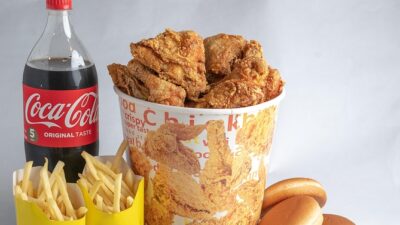In the fast-paced world we live in, convenience has become paramount. As lifestyles have evolved, so too have our dining habits. Once a niche offering, food delivery has transformed into a prominent industry, reshaping the way we think about meals. This article explores the fascinating evolution of food delivery, from humble beginnings to the modern convenience of having tasty treats delivered straight to your doorstep.
The Early Days: A Flicker of Convenience
The concept of food delivery isn’t new; it dates back centuries. In ancient Rome, street vendors would deliver food to citizens, making it accessible for those too busy to cook. Fast forward to the 19th century, and the introduction of the telephone allowed restaurants to take orders directly from customers without them having to leave home. However, it wasn’t until the 20th century that food delivery began to expand, primarily in urban areas.
1950s to 1980s: The Rise of Pizza Delivery
The 1950s marked a pivotal moment for food delivery with the booming popularity of pizza. The first-ever pizza delivery companies emerged, primarily in the United States, paving the way for more restaurants to adopt similar practices. This innovative change reflected a broader shift toward fast food culture, leading to iconic brands such as Domino’s and Pizza Hut. The introduction of motorized delivery vehicles made it easier to deliver food quickly, cementing pizza as a staple of delivery cuisine.
The Digital Revolution: Online Ordering Takes Over
The late 1990s and early 2000s saw an unparalleled technological boom, changing the way we live and eat. The rise of the internet and, subsequently, smartphones revolutionized food delivery. Platforms like Grubhub (founded in 2004) and Seamless (launched in 2009) changed the game by allowing users to browse menus, place orders, and pay online—all from the comfort of their homes.
These digital platforms made it easier for diners to discover new cuisines and local restaurants. As a result, local eateries gained a competitive edge, increasing their reach beyond foot traffic, while consumers enjoyed access to a diverse array of culinary options.
The Gig Economy: Flexibility and Demand
As smartphone apps took over, food delivery rapidly integrated into the burgeoning gig economy. Companies like Uber Eats, DoorDash, and Postmates emerged in the 2010s, offering flexible work opportunities for drivers and unprecedented convenience for consumers. It’s not just about pizza anymore; you can order anything from tacos to sushi, making it easier than ever to satisfy cravings.
This transformation in food delivery has brought about new challenges, including concerns about labor practices, tipping culture, and the environmental impact of increased packaging and delivery emissions. Yet, these challenges have also spurred innovation and discussion, pushing the industry to adapt and evolve further.
The Pandemic Effect: A Surge in Popularity
The COVID-19 pandemic was a significant turning point for food delivery, propelling it into the spotlight. With restaurants forced to close their dining rooms, many turned to delivery and takeout as a lifeline. Consumers, eager for a taste of normalcy, embraced delivery services more than ever, leading to record-breaking revenue for many providers.
Ghost Kitchens: A New Frontier
The surge in demand gave rise to a new trend: ghost kitchens. These delivery-only establishments operate without a traditional storefront, focusing solely on fulfilling online orders. By reducing overhead costs, ghost kitchens have enabled restaurant owners to experiment with different menus and cuisines, leading to a surge in culinary creativity.
The Future of Food Delivery: Innovations on the Horizon
As we look ahead, the future of food delivery is ripe with innovation. Artificial intelligence and machine learning are streamlining operations, optimizing delivery routes, and personalizing customer experiences. Sustainability is also becoming a priority, with restaurants and delivery services exploring eco-friendly packaging and emission-reducing delivery options, such as electric bikes or drones.
Culinary Inspirations From Around the Globe
With the global reach of food delivery services, consumers now have access to cuisines from around the world as never before. From Indian curries and Middle Eastern mezze to gourmet vegan meals, the diversity in food choices reflects a blossoming interest in global gastronomy. This cultural exchange is enriching palates and broadening culinary horizons.
Conclusion
The evolution of food delivery has come a long way since its inception. From ancient street vendors to the digital age, this industry reflects broader societal changes and technological advancements. As we move forward, one thing remains clear: the desire for tasty treats at our doorstep is here to stay. Food delivery has changed the way we eat, interact with local businesses, and explore new cuisines, turning every meal into an opportunity for convenience and discovery. Whether it’s a last-minute dinner plan or a cozy night in, the future of food delivery promises to keep satisfying our cravings, one order at a time.



